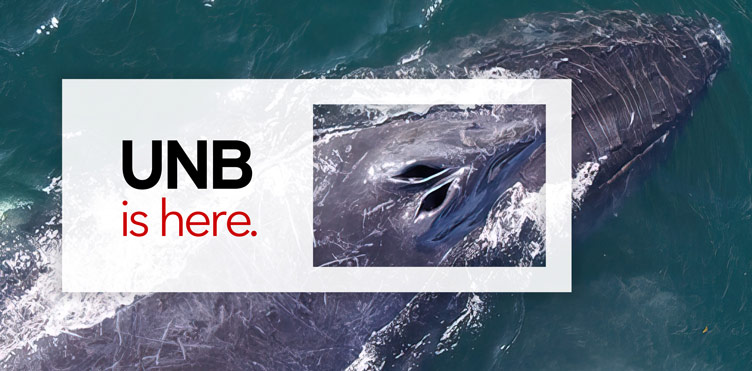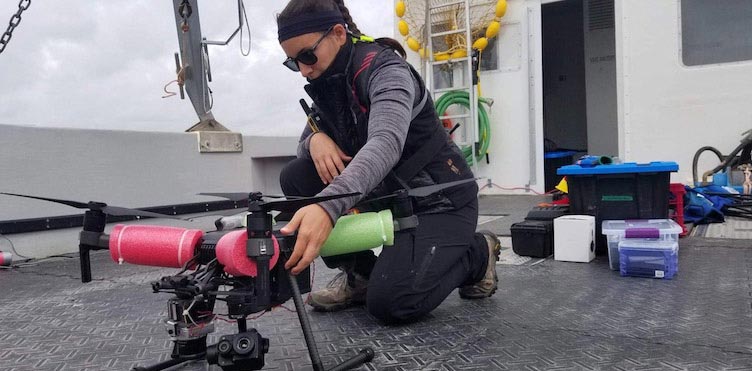
Graduate student Gina Lonati followed whales to UNB’s Saint John campus; now, she’s following them with drones to better understand the relationship between body temperature and health.
“In 2017 I attended a conference in Halifax where I learned that there are only 350 North Atlantic right whales left,” says Gina. At the time she worked at the Florida Fish and Wildlife Conservation Commission in St. Petersburg, Florida. “I was at a point in my life where I wanted to go back into academia, ask questions, find answers, and make something good happen.
Last year, Gina embarked on a month-long fieldwork trip in the Bay of Fundy, working with supervisor Dr. Davies; Natasha Hynes, whale laboratory technician in biological sciences; and “Matty,” a drone equipped with stable hovering capabilities and multiple cameras.
“Matty’s” two cameras – thermal and high-resolution – are used to measure the temperature of the blowhole and assess the body condition of a whale; both of which are indicators of the whale’s general health. “You can’t catch a right whale, take it out of the water and put it back,” says Gina. “Drones open up this whole new avenue for exploring whales up close without disturbing them.
“We first want to know what their temperature is. Does it change? If a whale has less blubber, does it mean it’s colder? Does a calf have a different temperature than an adult? Does their temperature vary when in the Gulf of St. Lawrence compared to when they’re in in Florida?”

Measuring the length of the whale relative to its width gives the research team an idea of the whale’s body condition. “This data will supplement our thermal data,” says Gina, “helping our ability to use blowhole temperature as an indication of health.”
The high-resolution camera also allows the team to check for entanglements or injuries to inform rescue intervention as needed. Matty’s aerial perspective can help the rescue team know where to cut ropes and where to approach the whale.
Theoretically, the use of drones is less invasive than other methods. To quantify that research, Gina and Dr. Jack Terhune, professor emeritus in biological sciences at UNB, are investigating Matty’s noise measurements and whether they can be heard by the whales.
“There are more people working on this North Atlantic right whale issue than there are right whales,” says Gina. “Being at UNB has afforded me the opportunity to engage with the people who are making management decisions. I hope it’s not too little too late, but I also hope we will find a solution that works before these whales go extinct.”